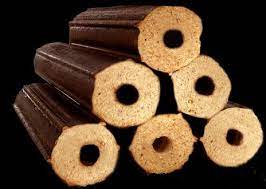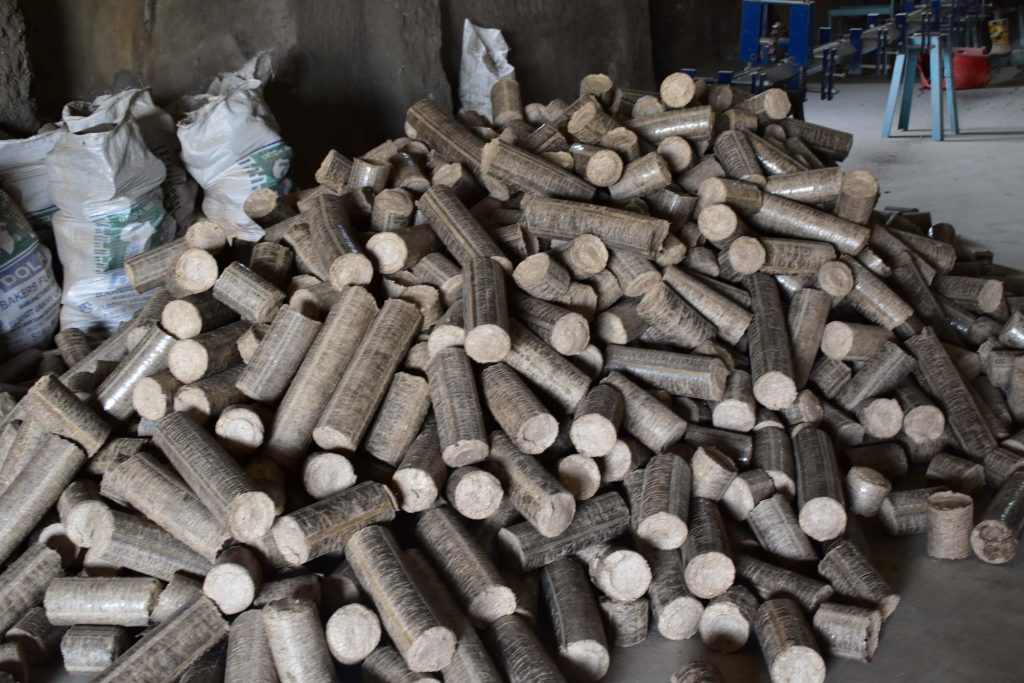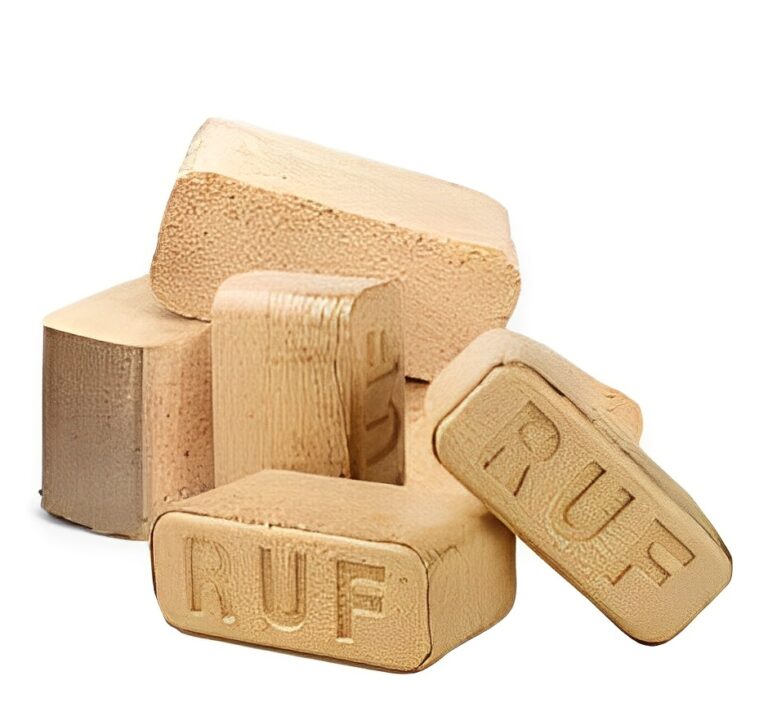In the pursuit of sustainable energy sources, biomass briquettes have emerged as a remarkable solution that tackles two pressing challenges: providing an eco-friendly alternative to traditional fuels and reducing waste.
Biomass briquettes tap in to the power of organic waste materials, transforming them into a condensed and efficient fuel source.
The global initiative known as Vision 2030 has set forth a clear goal to transition towards cleaner sources of energy and reduce reliance on fossil fuels. As part of this vision, there is a strong focus on promoting sustainable development and the adoption of environmentally friendly practices. Clean energy, including biomass briquettes, plays a pivotal role in achieving these targets.
Biomass briquettes offer immense potential for clean energy generation, as they utilize organic waste materials that would otherwise contribute to pollution or go to waste. By harnessing biomass resources and converting them into briquettes, we can significantly reduce greenhouse gas emissions and combat climate change.
Moreover, the production and use of briquettes provide economic opportunities for local communities, fostering a sustainable and inclusive development .

TYPES OF BRIQUETTES
Rice Husk Briquettes:
Rice husk, the residue from rice grain processing, has proven to be an exceptional biomass for briquette production. With its optimal moisture content of 8% to 12% and convenient granulation, rice husk requires no further grinding or drying. The low lignin content restricts the briquette diameter to below 75 mm without adding binders. These briquettes find their prime application in high-temperature boilers and furnaces, thanks to their ability to withstand intense heat without sintering
Here’s an outline of the process to create briquettes from rice husks:
Collection and Drying: Collect the rice husks after the rice grains have been separated. Thoroughly dry the husks to reduce their moisture content. Low moisture content is important for efficient briquette production.
Grinding: Use a grinder or pulverizer to grind the dried rice husks into smaller particles. This increases the surface area, making it easier to compress into briquettes.
Mixing and Binder Addition: Mix the ground rice husk powder with a binder material to improve the briquette’s cohesion and stability. Common binder materials include starch, clay, or other natural adhesives. Ensure that the binder is evenly distributed throughout the mixture.
Briquette Formation: Use a briquetting machine or a manual press to compress the mixture into briquettes of the desired shape and size. Apply pressure to achieve a compact and solid briquette.
Drying and Curing: Allow the freshly made briquettes to dry and cure in a well-ventilated area. This helps to remove any remaining moisture, making them more stable and easier to handle.
Storage and Utilization: Store the rice husk briquettes in a dry place to maintain their quality. They can be used as a renewable energy source for heating, cooking, or other industrial applications.
Sawdust Briquettes:
Produced from the remnants of sawmills and woodworking processes, sawdust briquettes have gained popularity for their versatility and availability. Sawdust, a fine particle size material, can easily be compacted into uniform briquettes through the application of moderate pressure. Due to its higher lignin content compared to rice husk, sawdust briquettes offer greater flexibility in terms of shape and size. They are widely used for domestic heating, cooking, and even industrial applications
Sawdust briquettes are a common form of biomass fuel created from sawdust, which is the byproduct of wood processing. Here’s an outline of how sawdust briquettes are made:
Collection and Drying: Collect sawdust from wood processing operations or use waste sawdust from woodworking activities. Ensure that the sawdust is relatively dry or dry it further to reduce its moisture content.
Grinding (Optional): If the sawdust particles are too large, you can use a grinder or pulverizer to break them down into smaller pieces. This can help improve the compressibility of the sawdust.
Mixing and Binder Addition: Mix the sawdust with a binder material to enhance the cohesion and stability of the briquettes. Common binder materials include starch, clay, or other natural adhesives. Ensure that the binder is evenly distributed throughout the mixture.
Briquette Formation: Use a briquetting machine or a manual press to compress the sawdust mixture into briquettes of the desired shape and size. Apply pressure to achieve a compact and solid briquette.
Drying and Curing: Allow the freshly made briquettes to dry and cure in a well-ventilated area. This helps remove any remaining moisture, making them more stable and easier to handle.
Storage and Utilization: Store the sawdust briquettes in a dry place to maintain their quality. They can be used as a renewable energy source for heating, cooking, or various industrial applications.
Coconut Shells
Coconut shell briquettes are an excellent source of biomass fuel, known for their high calorific value, low moisture content, and sustainable nature. Coconut shells, the hard outer part of coconuts, can be effectively converted into briquettes through the following process:
1. Collection and Drying: Collect coconut shells after the flesh and water inside the coconuts have been removed. Ensure that the shells are thoroughly dried to reduce their moisture content. This is important to ensure efficient briquette production.
2. Grinding and Carbonization: Grind the dried coconut shells into smaller particles using a grinder or pulverizer. Then, subject the ground shells to a carbonization process. Carbonization involves heating the shells in a controlled environment with limited oxygen supply, which removes volatile components and increases the overall carbon content, resulting in charcoal.
3. Mixing and Binder Addition: Mix the charcoalized coconut shell powder with a binder material, such as starch, clay, or any other natural adhesive. The binder helps hold the briquettes together during compression and burning. Thoroughly blend the mixture to achieve a consistent composition.
4. Briquette Formation: Use a briquetting machine or a manual press to compress the mixture into briquettes of the desired shape and size. Apply pressure to create compact and stable briquettes.
5. Drying and Curing: Allow the freshly made briquettes to dry and cure in a well-ventilated area. This helps remove any residual moisture and ensures that the briquettes attain the desired hardness and stability.
6. Storage and Utilization: Store the coconut shell briquettes in a dry place to maintain their quality. They can be used as a sustainable energy source for cooking, heating, or industrial purposes.
Always consider sustainable sourcing of coconut shells and adhere to environmentally friendly practices during the briquette production process.!

Sugarcane bagasse
Sugarcane bagasse can indeed be used as a valuable source for biomass briquettes. Sugarcane bagasse is the fibrous residue left after sugarcane stalks are crushed to extract the juice. It is a byproduct of the sugar industry and has potential as a biomass fuel due to its high cellulose content.
Biomass briquettes are compressed blocks of biomass materials, such as agricultural waste or woody biomass, which can be used as a renewable energy source. Sugarcane bagasse, with its high lignocellulosic content, can be effectively utilized to create briquettes.
Here is how you can make biomass briquettes using sugarcane bagasse:
Collection and drying: Collect the sugarcane bagasse and ensure it is thoroughly dried to reduce its moisture content. This is important to ensure the efficiency of the briquetting process.
Pulverization: Use a grinder or a pulverizer to break down the dried bagasse into smaller particles. This will increase the surface area and make it easier to compress.
Mixing: In order to improve the quality of the briquettes, you can mix the bagasse with other biomass materials, such as sawdust or agricultural residues. This will provide a better balance of properties for the briquettes.
Briquette formation: Add a binder material, such as starch or clay, to the bagasse and mix it thoroughly. This will help hold the briquettes together. Then, use a briquetting machine to compress the mixture into briquettes of the desired shape and size.
Drying and curing: Allow the freshly made briquettes to dry and cure in a well-ventilated area. This will ensure that they harden and become stable.
Storage and utilization: Store the biomass briquettes in a dry place to maintain their quality. They can be used as a fuel source in industries or even for household cooking and heating purposes.
Macademia Nuts
Macademia nut shells can be utilized a biomass material to create briquettes. Macadamia nut shells are hard outer husks that protect the edible macadamia nuts.
Here’s an outline of the process to create briquettes from macadamia nut shells:
1. Collection and Drying: Collect the macadamia nut shells after removing the edible nuts. Ensure that the shells are thoroughly dried to reduce their moisture content. Drying is important for efficient briquette production.
2. Grinding and Carbonization: Use a grinder or pulverizer to grind the dried macadamia nut shells into smaller particles. After grinding, subject the shell powder to a carbonization process. Carbonization involves heating the material in a controlled environment with limited oxygen supply. This process removes volatile components, increases carbon content, and results in charcoal.
3. Mixing and Binder Addition: Mix the carbonized macadamia nut shell powder with a binder material. Common binders include starch, clay, or other natural adhesives. The binder helps hold the briquettes together during compression and burning. Thoroughly blend the mixture to achieve a consistent composition.
4. Briquette Formation: Use a briquetting machine or a manual press to compress the mixture into briquettes of the desired shape and size. Apply pressure to compact the particles into solid briquettes.
5. Drying and Curing: Allow the freshly made briquettes to dry and cure in a well-ventilated area. This helps remove any remaining moisture and ensures that the briquettes become firm and stable.
6. Storage and Utilization: Store the macadamia nut shell briquettes in a dry place to preserve their quality. They can be utilized as a biomass fuel for heating, cooking, or various industrial applications.
Remember to prioritize sustainable sourcing of macadamia nut shells and consider eco-friendly practices throughout the briquette production process.
Groundnut Shells
Groundnut shells can be used as a biomass material to create briquettes. Groundnut shells are the outer coverings of peanuts and can be a valuable source of biomass fuel due to their high calorific value and abundance as a byproduct of peanut processing.
Here’s a general process that can be followed to create briquettes from groundnut shells:
Collect and dry: Gather the groundnut shells after the peanuts have been processed. Thoroughly dry them to reduce their moisture content. Low moisture content is important for efficient briquette production.
Grinding: Use a grinder or a pulverizer to grind the dried groundnut shells into smaller particles. This increases the surface area, making it easier to compress into briquettes.
Mixing: For better briquette quality, you can mix the groundnut shell powder with other biomass materials such as sawdust or agricultural residues. This blend can improve the combustion properties and overall performance of the briquettes.
Binding: Add a binder material to the groundnut shell powder and thoroughly mix it. Common binder materials include starch, clay, or other natural adhesives. The binder helps to hold the briquettes together during compression and burning.
Briquette formation: Use a briquetting machine or a manual press to compress the mixture into briquettes of the desired shape and size. Apply pressure to achieve a compact and solid briquette.
Drying and curing: Allow the freshly made briquettes to dry and cure in a well-ventilated area. This helps to remove any remaining moisture, making them more stable and easier to handle.
Storage and utilization: Store the groundnut shell briquettes in a dry place to preserve their quality. They can be used as a renewable energy source for heating, cooking, or other industrial applications.
Remember, the specific process and equipment used may vary depending on your resources and requirements. It’s essential to ensure sustainability in the sourcing of biomass materials and consider any environmental impacts.
Frequently Asked Questions
1. What are biomass briquettes, and how are they made?
Biomass briquettes are a condensed and efficient form of fuel created from organic waste materials such as rice husks, sawdust, coconut shells, and more. They are made through a process that involves collecting, drying, grinding, mixing with binders (such as starch or clay), compacting, and drying. The exact process may vary depending on the type of biomass used.
2. What are the benefits of using biomass briquettes?
- Biomass briquettes are an eco-friendly alternative to traditional fuels.
- They reduce waste by repurposing organic materials.
- They have a lower carbon footprint and help combat climate change.
- They provide an efficient and sustainable source of energy.
- The production of briquettes can create economic opportunities for local communities.
3. Can biomass briquettes be used for cooking and heating at home?
Yes, biomass briquettes are commonly used for household cooking and heating. They provide a clean and renewable source of energy, making them a sustainable choice for home use.
4. What types of biomass materials can be used to make briquettes?
Various biomass materials can be used, including rice husks, sawdust, coconut shells, sugarcane bagasse, and groundnut shells. The choice of material depends on factors like availability and specific applications.
5. Are there any safety considerations when using biomass briquettes for cooking or heating?
It’s essential to follow safety guidelines when using any type of fuel. Ensure proper ventilation when using briquettes indoors, and follow manufacturer recommendations. Also, be cautious with open flames and store briquettes in a dry place away from moisture.
6. How do biomass briquettes contribute to sustainability and the environment?
Biomass briquettes reduce the need for conventional fuels, which are often fossil-based and contribute to greenhouse gas emissions. By using organic waste materials and converting them into briquettes, we reduce waste and lower carbon emissions, contributing to a more sustainable environment.
7. Can I make biomass briquettes at home, or do I need special equipment?
While it’s possible to make biomass briquettes at home, it’s more efficient to use specialized equipment, such as briquetting machines. These machines provide the necessary pressure and consistency to create high-quality briquettes. However, small-scale production can be done manually with the right tools.
8. Are there any limitations or challenges in using biomass briquettes?
Some limitations include the need for proper storage to maintain briquette quality, potential variations in the quality of biomass materials, and ensuring that the briquettes are used in well-ventilated areas to manage emissions.
9. Where can I find sources of biomass materials for briquette production?
Sources of biomass materials may vary by region. You can often find them at local agricultural or industrial facilities, sawmills, or by partnering with local communities. It’s important to ensure a sustainable and ethical source for your biomass materials.
10. Are there any incentives or support for using biomass briquettes for clean energy production?
Government incentives and grants may be available in some regions to promote clean energy initiatives. It’s advisable to research local and national programs that support sustainable energy solutions.

